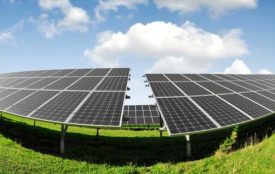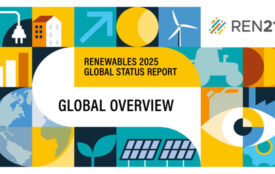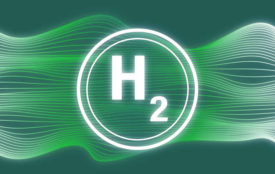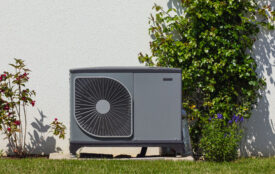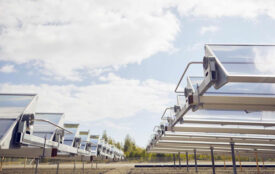WWEA Annual Report 2024: A Challenging Year for Windpower
Total capacity exceeds 1’174 Gigawatt – 121 Gigawatt added in 2024, slightly less than the last year
Dramatic 18% decline outside China – Annual growth rate falls from 13,0% to 11,5% – China installs 87 Gigawatt, 72% of new global capacity – Brazil becomes second largest market and joins top 5 wind power nations.
In 2024, new wind turbine installations fell far short of expectations, reaching 121’305 Megawatt, slightly less than in 2023, when 121’465 MW were installed. Many of the major markets installed less than in the previous year – in almost half of the top 20 markets, new capacity was lower than in 2023.
According to preliminary statistics published today by the World Wind Energy Association, global wind power capacity has now reached 1’173’581 Megawatt – well below the estimates published by WWEA in autumn 2024.
The world saw a dramatic drop in new installed capacity outside of China: While all countries excluding China installed a total of 42’095 Megawatt in 2023, this fell to just 34’413 MW in the year 2024, a drop by 18%.
The volume of the capacity added results in a global growth rate of 11,5%, significantly lower than in 2023, when wind capacity grew by 13,0%.
Of the top twenty countries, only five had growth rates well above the global average: China with 18,3%, Brazil with 19,0%, Finland (20,3%), Australia (27,5%) and Argentina (16,6%). Some of the previously very dynamic markets saw a growth of less than 5%: USA (2,8%), Germany (4,6%), Spain (3,9%) and France (3,9%).
The countries with the largest market volume for new wind turbines were in 2024: China (86,7 GW), Brazil (5,4 GW), United States (4,2 GW), India (3,4 GW), Australia (3,3 GW), Germany (3,2 GW) and the United Kingdom (2,2 GW).
Long-term developments: Growth continues but uncertainties emerge
With 1’173’581 Megawatt of installed capacity, the world has reached a new record in total installations although it has fallen short of expectations and forecasts for 2024. It is expected that some of the new installations originally anticipated for 2024 will take place in 2025.
While growth is generally expected in the coming years, driven by new policies, recent developments in the US have created enormous uncertainty not only about the future of the US market, but also about the viability and reliability of international supply chains.
As a result, a tripling of wind power capacity before the end of this decade is not certain for all countries although a tenfold increase by the middle of the century still can be considered a realistic option.
Growing opposition in some countries poses an additional risk to the growth of the wind sector. Misinformation spread by populist movements and interest groups is fueling a difficult debate in some countries about some wind farms, whether onshore or offshore.
It will therefore be crucial to counter fake news with accurate information. It will be essential for wind energy development around the world to follow high standards of community engagement and to ensure that local citizens and communities benefit directly and financially from wind farms in their vicinity. The WWEA Community Engagement Council is working on international guidelines to ensure that best-practice is applied globally.
Share of wind power in electricity generation and consumption
The world’s installed wind power capacity now meets well over 10% of global electricity demand – and much more than nuclear power.
More than 30 countries now have a share of wind power above the world average – more than 10%. Eleven countries now generate more than 20% of their electricity from wind, and seven of these have a share of 30% or more: the leader Denmark, which generates more than one in two Kilowatt hours of its electricity from wind, Germany, the United Kingdom, Portugal, the Netherlands, Ireland and Uruguay. These countries demonstrate that the world as a whole can achieve a 40-50% share of wind power in total electricity generation, as outlined by the WWEA in a long-term scenario.
Given the trend towards electrification in the transport and heating/cooling sectors, wind power will play an even greater role in the future of global energy supply. Wind power will also provide the energy to power cars and heat/cool homes.
Barriers to faster deployment
New market uncertainties have been created by the new US administration which has announced that it will halt environmental and climate legislation and revive the fossil industry, including the gas, oil and coal sectors. At the same time, wind projects, both offshore and onshore, have been called into question. New trade barriers have added uncertainty to international supply chains. Although the US global market share in 2024 was only around 4%, it is still too early to understand the potential impact on the global wind power supply chains.
Another long-term obstacle is fossil fuel subsidies which continue to severely distort energy markets. After reaching new heights in recent years – due to the fossil energy supply crisis caused the Russian invasion of Ukraine – governments have been very slow to remove these subsidies, which would be essential to create a level playing field for zero-emission renewables.
Time-consuming approval and planning procedures remain another major obstacle. As WWEA noted some time ago, the average planning and permitting process takes more than five years – in some countries ten years or more. Permitting should be kept to a reasonable period of time, under normal circumstances two years should be sufficient.
While good community engagement goes hand in hand with rapid growth – as local citizens are often active drivers of wind energy development – vocal opposition to wind farms can have a potentially destructive effect, delaying or preventing wind projects. Accordingly, community-based wind is a key driver, as many cases have shown. Based on this understanding, WWEA is currently drafting Community Engagement Guidelines based on practical experience, to be released before the end of 2025.
It is also worth noting that an increasing number of jurisdictions have begun to establish legal standards for this purpose – community energy laws that require wind farm investors to provide certain forms of community benefits, whether in the form of community shares, low electricity prices, payments to the local community, etc. These laws are sometimes called “community energy laws”.




